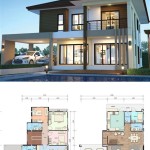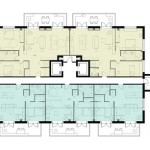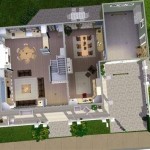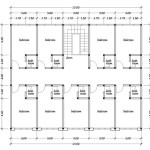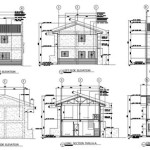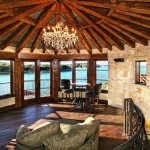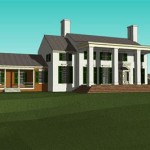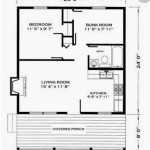Northern Cardinal Birdhouse Plans: Free Printable Options
The Northern Cardinal (Cardinalis cardinalis) is a popular backyard bird, admired for its vibrant plumage and cheerful song. Attracting cardinals to a garden or property can be achieved through providing food, water, and adequate shelter. While cardinals are not typically cavity nesters, offering specific types of birdhouses designed to mimic their preferred nesting environments can prove successful. This article explores the availability of free printable Northern Cardinal birdhouse plans and provides guidance on selecting appropriate designs and materials.
Cardinals prefer nesting in dense shrubs and thickets, usually building their cup-shaped nests within a few feet of the ground. Translating this preference into a birdhouse design requires focusing on creating a sense of security and concealment, rather than replicating a typical enclosed birdhouse. Open-fronted designs or nesting platforms are generally more appealing to cardinals than traditional birdhouses with small entrance holes.
The search for free printable Northern Cardinal birdhouse plans online can yield a variety of options, ranging from simple platform designs to more elaborate open-fronted structures. Evaluating the suitability of these plans requires careful consideration of several factors, including dimensions, materials, and ease of construction. A well-designed birdhouse promotes cardinal occupancy and protects the birds from the elements and potential predators.
Key Considerations for Selecting Cardinal Birdhouse Plans
Selecting appropriate birdhouse plans for Northern Cardinals depends largely on understanding their nesting preferences. Unlike birds that nest in cavities, cardinals prefer open or semi-open structures that offer protection from the elements while still allowing for a clear view of their surroundings. Several key points must be considered when choosing or modifying birdhouse plans to suit the needs of these birds.
Firstly, the size and dimensions of the birdhouse are crucial. Cardinals require ample space to build their nests and raise their young. A platform or open-fronted box should be large enough to accommodate a nest that is typically 4-5 inches in diameter. The depth of the platform or box should also be sufficient to provide adequate protection from rain and wind. Aim for a platform that is at least 8 inches by 8 inches, or an open-fronted box with similar internal dimensions.
Secondly, the material used for construction plays a significant role in the birdhouse's durability and suitability. Untreated wood, such as cedar or redwood, is ideal due to its natural resistance to decay and insects. Avoid using treated lumber, as the chemicals can be harmful to birds. The wood should be thick enough (at least ¾ inch) to provide insulation and stability. Secure all joints with weatherproof screws or nails to ensure the birdhouse can withstand the elements.
Thirdly, drainage and ventilation are essential for maintaining a healthy environment inside the birdhouse. Drill several small drainage holes in the floor of the platform or box to prevent water from accumulating. Provide ventilation holes near the top of the sides to allow for air circulation and prevent overheating during hot weather. Adequate drainage and ventilation help to keep the nest dry and prevent the growth of mold and bacteria.
Evaluating Free Printable Birdhouse Plans
The internet offers a plethora of free printable birdhouse plans. However, the quality and suitability of these plans can vary greatly. A critical evaluation of any plan is necessary before embarking on the construction process. Look for plans that clearly specify dimensions, materials, and construction steps. Diagrams and illustrations should be clear and easy to understand.
One common type of free plan is for a simple nesting platform. These platforms are essentially flat surfaces with a small raised edge to help contain the nest. While easy to construct, platforms may not offer sufficient protection from the elements or predators. Consider modifying a platform plan to include a partial roof or back wall to provide additional shelter. This can be achieved by adding a simple angled roof or attaching a piece of wood to the back of the platform.
Another type of plan available is for an open-fronted birdhouse. These birdhouses resemble traditional birdhouses but lack a front panel or have a very large opening. This design offers more protection than a simple platform while still catering to the cardinal's preference for an unobstructed view. When evaluating an open-fronted birdhouse plan, pay close attention to the size of the opening and the depth of the box. The opening should be large enough to allow cardinals to enter and exit easily, but not so large that it exposes the nest to predators.
Consider the complexity of the plan. While some plans may look appealing, they may require advanced woodworking skills or specialized tools. Choose a plan that matches your skill level and available resources. If you are a beginner, start with a simple design and gradually progress to more complex projects as you gain experience.
Always check for user reviews or comments on the plans. Other builders may have identified potential problems or suggested improvements. This feedback can be invaluable in ensuring the success of the project. Look for comments that address issues such as stability, weather resistance, and ease of construction.
Modifying Existing Plans for Cardinal-Specific Needs
Even if a free printable plan is not specifically designed for Northern Cardinals, it can often be modified to better suit their preferences. Understanding the specific needs of cardinals allows for informed adjustments to existing designs, increasing the likelihood of attracting them to a birdhouse.
One common modification is to increase the size of the birdhouse. Many generic birdhouse plans are designed for smaller birds, such as wrens or chickadees. Cardinals require more space, so it is essential to scale up the dimensions of the plan accordingly. This may involve increasing the width, depth, and height of the birdhouse. Ensure that the larger dimensions do not compromise the structural integrity of the birdhouse.
Another important modification is to adjust the entrance size or eliminate it altogether. Cardinals prefer open or semi-open structures, so reducing or eliminating the entrance hole is often beneficial. For traditional birdhouse plans, consider removing the front panel entirely or replacing it with a larger opening. For platform plans, adding a partial roof or back wall can provide additional shelter without completely enclosing the nest.
The addition of natural nesting materials can also enhance the appeal of a birdhouse to cardinals. Place a small amount of dried grass, twigs, or leaves inside the birdhouse to encourage them to begin building their nest. Avoid using artificial materials, such as cotton or yarn, as these can be harmful to birds. Cardinals will often supplement the provided materials with their own collection of natural items from the surrounding environment.
Camouflaging the birdhouse can also make it more appealing to cardinals. Cardinals prefer nesting in concealed locations, so blending the birdhouse into its surroundings can increase its chances of occupancy. Use natural-colored paints or stains to match the surrounding foliage. You can also attach branches, leaves, or other natural materials to the outside of the birdhouse to provide additional camouflage.
Finally, consider the placement of the birdhouse. Cardinals prefer to nest in sheltered locations, such as dense shrubs or trees. Mount the birdhouse in a location that provides protection from the elements and predators. Avoid placing the birdhouse in direct sunlight or in an exposed area. A secluded, shaded location is ideal for attracting cardinals.
By carefully considering these key points and evaluating free printable birdhouse plans with a critical eye, it is possible to create a suitable nesting site for Northern Cardinals. Modifying existing plans to better suit their preferences can further increase the chances of success. Providing a safe, comfortable, and concealed nesting environment will encourage these beautiful birds to frequent a garden and raise their young.

Cardinal Nesting Shelter Bird House Plans Construct101

Nest Box Birdhouse Plans Bird House Free Cardinal

Cardinal Nesting Shelter Bird House Plans Construct101

Cardinal Nesting Shelter Bird House Plans Construct101

Birdhouse And Nest Box Plans For Several Bird Species The Birders Report

Bird House Plans Free Construct101

Free Easy Diy Wood Birdhouse Plans

10 Free Diy Birdhouse Plans Simple No Drilling Designs

38 Free Birdhouse Plans Updated For 2024 Guide Patterns

Cardinal Nesting Shelter Birdhouse Plans Construct101

